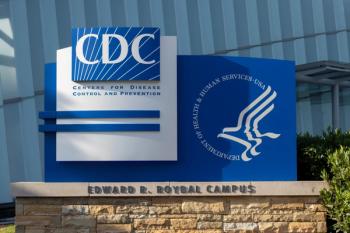
Scholarship Program Aims to Improve Diversity, Equity in Pharmacy Field
If health care professionals want to increase access and care in these underrepresented communities, an important first step is also increasing the representation of those groups in health care itself.
Given a growing awareness of the importance of a diverse pharmacy workforce, a new scholarship program from the
Pharmacies play a crucial role in health care access, with 90% of the US population living within 5 miles of a pharmacy, according to Ann Anaya, JD, Chief Diversity, Equity, and Inclusion Officer at Cencora (formerly AmerisourceBergen), in an interview with Pharmacy Times. Anaya added that patients have a higher level of trust with their pharmacists, due to both accessibility and the frequency with which they see their pharmacist.
“The idea of locality and frequency is creating many possibilities in terms of expanding the role that pharmacists play,” Anaya said. “What we’re witnessing is an evolution of that role. We’re shifting away from this perception that pharmacists just dispense medications towards one where pharmacists are public health servants and providers.”
The pandemic certainly accelerated this evolution, but Anaya noted that the move to a post-pandemic world is a pivotal moment for pharmacists to push for expanded roles and responsibilities.
One of those crucial roles is representing the populations they serve. According to data from the American Association of Colleges of Pharmacy, Anaya cited that approximately 22% of current pharmacists are non-majority professionals. For example, around 5% are African American and around 4.5% are Hispanic or Latinx. These groups also include American Indian, Native Pacific Islander, and other underrepresented populations.
If health care professionals want to increase access and care in these underrepresented communities, Anaya said an important first step is also increasing the representation of those groups in health care itself. Another key reason for improving diversity in pharmacy is encouraging and supporting cultural competency.
“For example, my background is Hispanic Latino, and I know in my community, having a safe place to go where you will be accepted, perhaps if your first language isn’t English, [is a] particular challenge within that community,” Anaya explained. “So that cultural competency is really important, because again, we’re building trust in those communities.”
In addition to building cultural competency, improving diversity in pharmacy can help address health care disparities caused by structural inequality. Having pharmacists who personally understand the challenges and impacts on the community is key to improving and addressing health outcomes.
Finally, Anaya said improving pharmacist diversity can help address pharmacy deserts. Although 90% of the population live within 5 miles of a pharmacy, Anaya noted that minority communities are often disproportionately affected by further distances to pharmacies and, therefore, a lack of access. Finding solutions to these deserts does not necessarily have to mean expanded footprints and opening new locations, but could include innovative solutions to transportation issues, delivery options, or translation services.
Good Neighbor Pharmacy stores are already working hard to address these challenges, said Jenni Zilka, President of Good Neighbor Pharmacy, in an interview with Pharmacy Times. She noted that when Good Neighbor Pharmacy joined the federal COVID-19 vaccination efforts, their patients’ social vulnerability index was measured by the CDC and the resulted validated the hard work their pharmacists are doing to care for these communities.
In an effort to further address all of these challenges and the overarching need for a more diverse pharmacy workforce, the Cencora Impact Foundation and Good Neighbor Pharmacy developed the
“I’m especially excited about this right now because a couple of weeks ago…we had the honor of meeting and celebrating our inaugural recipients at our
Zilka said identifying and helping students grow from the very beginning of their careers is a key part of the program, as well as to introduce the students to the ideas of independent pharmacy ownership, entrepreneurship and holistic patient care.
Not only should pharmacists be more diverse, but Anaya added that independent pharmacy owners should also be diverse and representative of those they serve. By helping students grow their entrepreneurship potential, the scholarship program aims to achieve this goal, as well.
“The scholarship itself aligns with our commitment to seek out those inequities and address those disparities, but also to provide opportunity and increased possibility,” Anaya said. “So, for example, if you haven’t thought about being an independent pharmacist, we want you to think about it, and we want people from all backgrounds to think about it.”
Good Neighbor Pharmacy provides many tools for independent pharmacists and pharmacy owners to further support their work. Zilka said these tools include digital solutions (both data collection and communication capabilities); marketing and advertising tools in multiple languages; and telehealth, all of which are crucial to reaching underserved communities. Good Neighbor Pharmacy also has business coaches available to help pharmacies best understand and utilize the data available to them to make the best decisions possible for their business.
With all of these tools available and the inaugural scholarship recipients starting their careers, Anaya said the future is bright for a diverse, representative pharmacy field.
“When we think about [representation, diversity, equity, and inclusion], it’s more than just your background,” Anaya concluded. “It’s all of the life experiences, skills, and the perspectives that you bring to the table. And if you can bring that to an independent pharmacy, what a world that would be.”
Newsletter
Stay informed on drug updates, treatment guidelines, and pharmacy practice trends—subscribe to Pharmacy Times for weekly clinical insights.




















































































































































































































